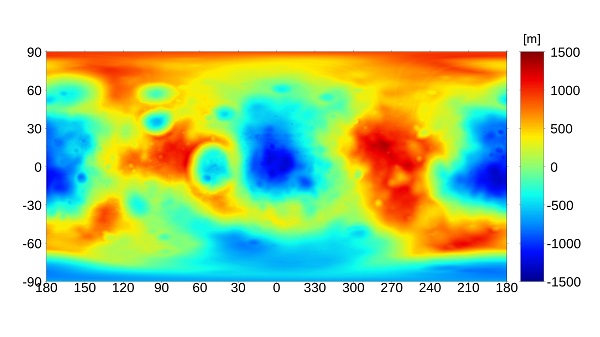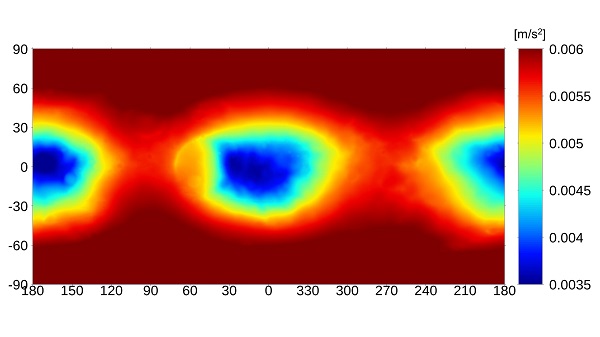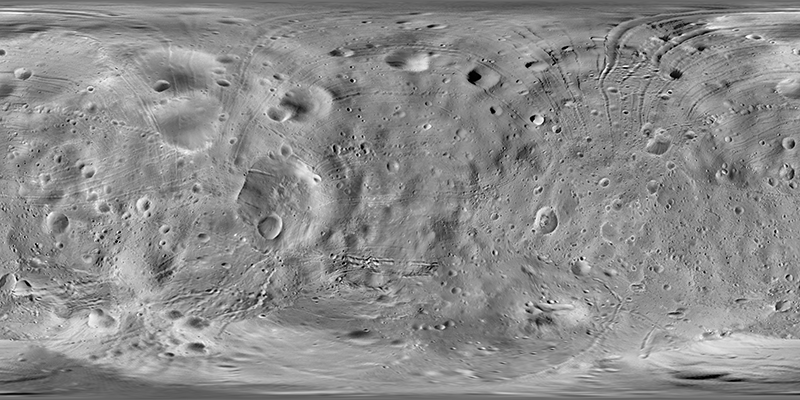PRODUCTS
Map of Phobos Surface Slopes, Elevations, and Gravitational Acceleration
Phobos is a moon of Mars with a size of 26.06 by 22.80 by 18.28 km in diameter. Mars also has another moon called Deimos, and Phobos is closer to Mars. We plan to extract samples from Phobos in the Martian moons exploration program (MMX: Martian Moons eXploration) currently being carried out by the Japan Aerospace Exploration Agency (JAXA). Phobos’s gravitational force and the contours and terrain on its surface must be extensively known beforehand for a probe to be able to safely operate in its vicinity and land on it.
Since Phobos is closer to its planet than any other moon in our solar system, it is greatly influenced by Mars. Like Earth’s moon, Phobos always keeps the same face towards Mars. Thus, if a person were to stand still on the surface of Phobos, that person would feel centrifugal force from gravity of Phobos, the gravity of Mars, and the revolutions of Phobos around Mars. The internal composition of Phobos is not known, but the slopes (Illustration 1), elevations (Illustration 2), and gravitational acceleration (Illustration 3) of its surface can be calculated assuming that it has a body of uniform density. These calculation results that we produce along with other products such as exploration images (Illustration 4) are used for considerations when choosing landing sites.




Reference:
- Thomas, P. C., 1993. Gravity, Tides, and Topography on Small Satellites and Asteroids: Application to Surface Features of the Martian Satellites. Icarus. 105, 326-344.
- Gaskell, R., 2011. Gaskell Phobos Shape Model V1.0. VO1-SA-VISA/VISB-5-PHOBOSSHAPE-V1.0. NASA Planetary Data System.
- Willner, K., Shi, X., Oberst, J., 2014. Phobos' shape and topography models. Planet Space Sci. 102, 51-59.
- Stooke. P., Stooke Small Bodies Maps V3.0. MULTI-SA-MULTI-6-STOOKEMAPS-V3.0. NASA Planetary Data System, 2015.

